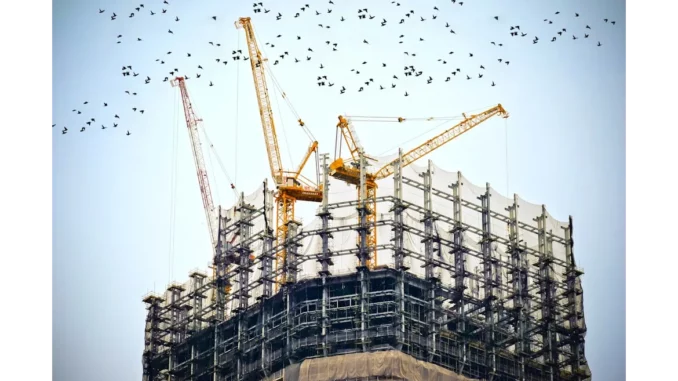
In the quest for a more sustainable future, the construction industry stands at a crucial juncture. With the UK government’s ambitious target of achieving net zero carbon emissions by 2050, the sector is under mounting pressure to adopt greener practices. BREEAM (BRE Environmental Assessment Method) has emerged as a pivotal framework in guiding the industry towards this goal. To delve deeper into the impact of BREEAM on sustainable construction, I recently sat down with Andrew Mitchell, an experienced construction analyst, who shared his insights and experiences with this transformative standard.
Discover how Focus360 Energy can help with BREEAM certification.
The BREEAM Experience
Andrew Mitchell, a seasoned observer of the construction industry, has seen the evolution of sustainability practices over the years. “When I first started, sustainability was more of a buzzword than a practice,” Andrew recalls. “But with frameworks like BREEAM, there’s a tangible shift happening.”
BREEAM, developed by the Building Research Establishment, serves as a global sustainability standard that assesses the environmental performance of buildings. Its influence extends beyond the UK, setting benchmarks for sustainable design and construction worldwide. “BREEAM provides a structured approach to sustainability,” Andrew explains, “covering everything from energy efficiency and water conservation to materials used and waste management.”
Economic, Environmental, and Social Pillars
Andrew elaborates on how BREEAM aligns with the three pillars of sustainability: economic, environmental, and social benefits. “Economically, the initial costs of implementing sustainable practices can be daunting,” he admits, “but data shows that green buildings often see a 7% increase in their value. Plus, operational costs are lower in the long run due to energy savings.”
Environmentally, BREEAM-certified buildings contribute significantly to reducing greenhouse gas emissions. “It’s not just about using renewable energy,” Andrew notes, “but also about minimising embodied emissions—the carbon footprint of construction materials and processes.”
On the social front, Andrew highlights improved living and working conditions. “BREEAM encourages better indoor air quality and natural lighting, which enhances the well-being of occupants and boosts productivity.”
Navigating Challenges
Despite its benefits, sustainable construction isn’t without its challenges. Andrew points out the cost and knowledge barriers that still persist. “Transitioning to a new model is never easy,” he says. “Sustainable materials can be pricey, and there’s a learning curve for the workforce.”
However, Andrew is optimistic about the future. “As more professionals get trained in sustainable practices, and as the market for green materials grows, these challenges will diminish.”
Regulatory Support and Future Prospects
The role of government regulations cannot be understated. “The UK government’s Future Homes Standard, set for 2025, is a game-changer,” Andrew remarks. “Ensuring that all new buildings are ‘net-zero ready’ will set a high bar for sustainability.”
Andrew also mentions new regulations aimed at phasing out natural gas boilers by 2035 and introducing performance-based ratings for large buildings. “These measures are crucial in pushing the industry towards net zero.”
BREEAM’s Broader Impact
Beyond individual projects, BREEAM is fostering a culture of sustainability in construction. Andrew notes its influence on corporate social responsibility (CSR). “Companies are increasingly aware of the reputational benefits of being green,” he says. “BREEAM certification is a badge of honour that demonstrates a commitment to ethical practices.”
Moreover, BREEAM is catalysing innovation in construction methods and materials. “We’re seeing more use of sustainable materials like bamboo and recycled wood,” Andrew observes. “And construction methods are evolving to minimise waste and conserve energy.”
A Personal Journey
For Andrew, working with BREEAM has been both a professional and personal journey. “Seeing the tangible benefits of sustainable construction is incredibly rewarding,” he shares. “It’s about leaving a legacy for future generations.”
His involvement with BREEAM has also opened up new career opportunities. “There’s a growing demand for roles like environmental advisors and sustainability managers,” he notes. “It’s an exciting time to be in the field.”
Conclusion
As our conversation drew to a close, Andrew left me with a hopeful vision for the future. “The construction industry is on the cusp of a green revolution,” he enthused. “BREEAM is more than just a standard; it’s a catalyst for change.”
For those concerned about the environmental impact of construction, Andrew’s insights offer reassurance that the industry is moving in the right direction. With frameworks like BREEAM guiding the way, the path to a sustainable future seems not only possible but within reach.
Lewis Davis


Be the first to comment